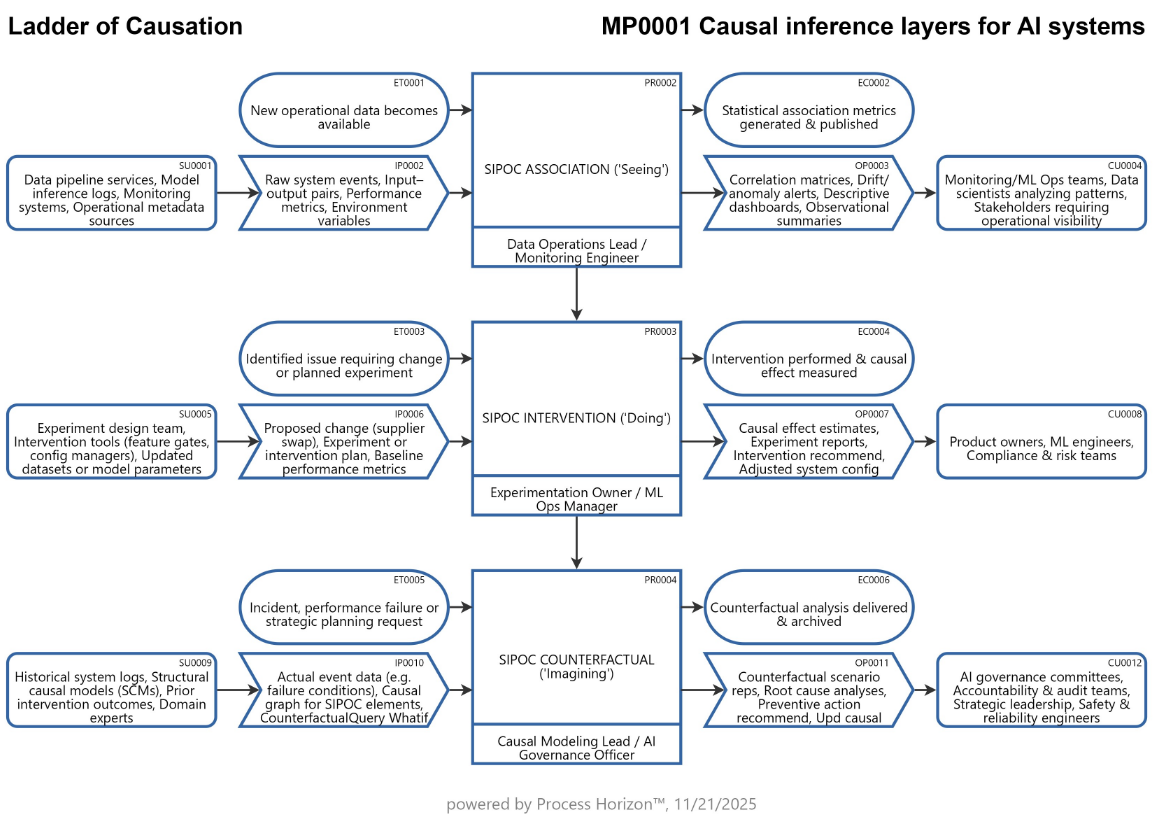SIPOC-based causal inference layers for AI systems

Judea Pearl’s Ladder of Causation defines three levels of causal reasoning:
Rung 1 Association ('Seeing'): Passive observation & correlation analysis Rung 2 Intervention ('Doing'): Designing & running controlled experiments, applying do(...) actions Rung 3 Counterfactuals ('Imagining'): Understanding 'what would have happened if…' for root cause analysis & planning
Applying the Ladder of Causation to SIPOC in AI Systems
SIPOC model: Suppliers > Inputs > Process > Outputs > Customers
We can map each rung to how an AI system can use SIPOC for management & control.
Layer 1 Association in SIPOC ('Seeing the process'): SIPOC provides a structured map so the AI can understand what variables exist and how they relate empirically. The AI passively monitors SIPOC variables and identifies correlations among inputs, processes & outputs.
Layer 2 Intervention in SIPOC ('Controlling the process'): SIPOC as a framework identifies where interventions can occur: Supplier selection, Input filtering, Process redesign, Output gating, Customer requirements propagation. The AI performs controlled adjustments to suppliers, inputs, or process steps and evaluates causal effects.
Layer 3 Counterfactuals in SIPOC ('Explaining or predicting alternate histories of the process'): Defines clear nodes (S, I, P, O, C) that become variables in the AI’s structural causal model. The AI builds a causal model over SIPOC to ask 'What would have happened if…? for improvement, explanation or prevention.
Using the following link you can access this sandbox SIPOC model in the ProcessHorizon web app and adapt it to your needs (easy customizing) and export or print the automagically created visual AllinOne SIPOC map as a PDF document or share it with your peers: https://app.processhorizon.com/enterprises/e1zw7J9HUDxRYGugC3ywsJVy/frontend

